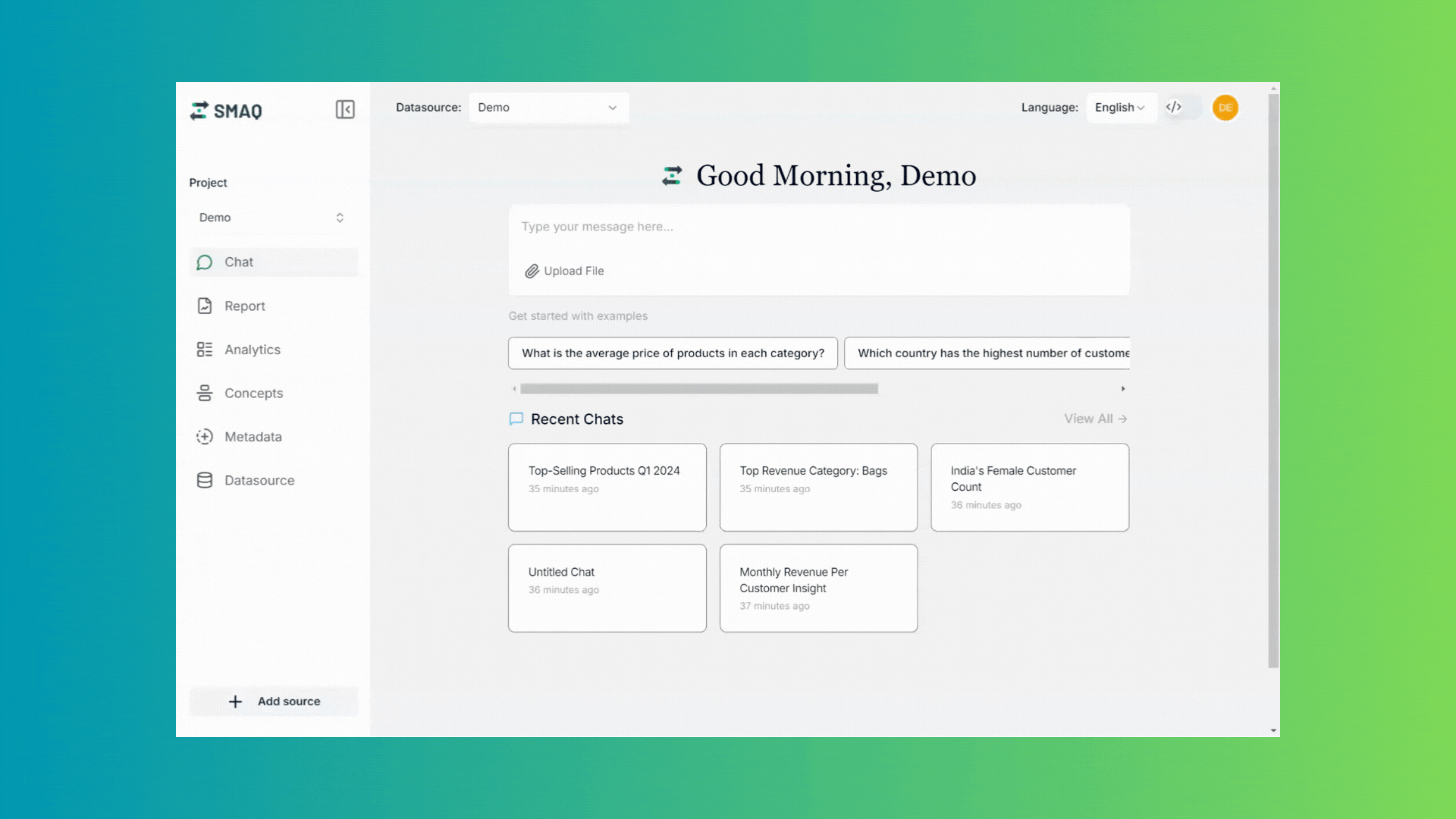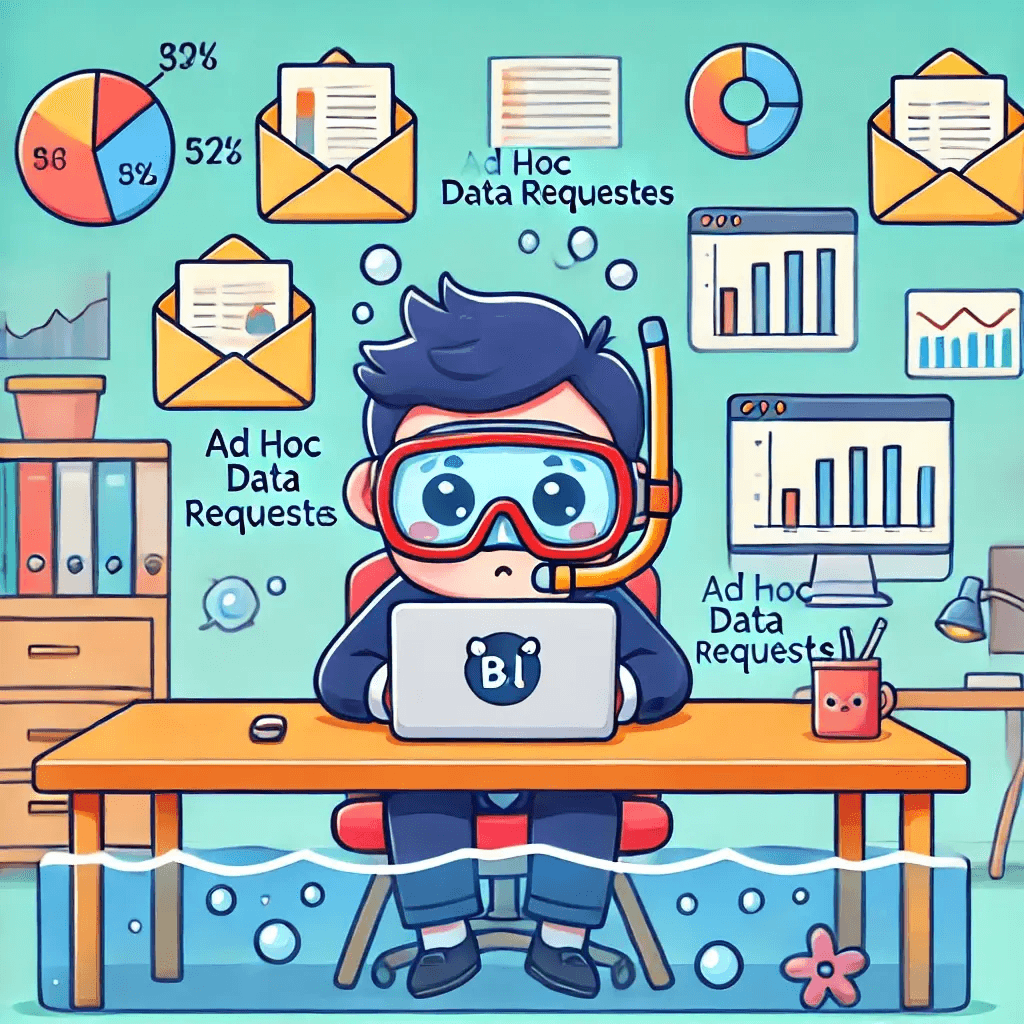Are Your BI Analysts Drowning?
Why Does This Matter?
Is your BI team drowning in a sea of data requests? Imagine your strategic analysts constantly putting out small fires instead of driving real business value. This common scenario is crippling organizations, slowing decision-making, and eroding competitive advantage. Discover how this hidden productivity killer might be sabotaging your business intelligence efforts and learn about the revolutionary solution that's changing the game.
3 Most Common Problems With Ad-hoc Data Requests
- Requests lack clarity and requirements shift frequently : Users often make vague data requests without a clear use case in mind. When asked for more details, they might become defensive, leading to a cycle of iterative, often pointless data pulls. Example: A user asks, "How many users do we have?" without specifying the context or purpose, leading to multiple follow-up requests after receiving the initial data.
- High pressure and urgency: There is frequently significant pressure from senior management to quickly fulfill data requests, often with tight deadlines. This urgency can lead to rushed work, potentially inaccurate results, and increased stress on the BI team. While these needs are valid, the constant stream of urgent requests can create bottlenecks in the BI workflow, leading to delays and frustration on both sides.
- The answer is already on the dashboard…: Many requests could be quickly answered using existing dashboards. However, users are often reluctant to navigate these tools themselves, citing reasons such as lack of time, unfamiliarity with the interface, or preference for "expert" interpretations.
Where do ad-hoc data requests usually come from?
Ad-hoc requests are particularly prevalent in several key departments within organizations. These requests often stem from the need for timely, specific data to drive decision-making.
Sales
Sales representatives require up-to-date information on customer behavior and product performance. They frequently request specific data slices to track performance, analyze pipeline health, and identify cross-selling opportunities. This constant need for real-time insights adds significantly to BI teams' workload.
Marketing
Marketing teams rely on insights about campaign effectiveness and audience engagement. They need detailed analytics on reach, impressions, click-through rates, and conversion rates across various channels. This demand for granular, current information is a major source of ad-hoc requests.
Finance
Analysts regularly seek detailed financial reports and forecasts. They depend on comprehensive data about revenue streams, expenses, and projections for resource allocation and investment decisions. The complexity of financial data often makes these teams frequent sources of ad-hoc requests to BI analysts.
Are your BI analyst fighting fire or driving values?
Think of BI analysts as firefighters constantly putting out small fires (urgent data requests) instead of focusing on preventing big fires (creating long-term, valuable insights). This situation can make them feel overwhelmed and frustrated. It's like always fixing leaks in a boat instead of steering it in the right direction. To fix this, companies need to find a way to handle quick data needs while also giving BI teams time to work on big projects that can really help the business grow and improve.
Why Dashboards and Reports Are Insufficient?
While dashboards and reports are valuable tools for data visualization and analysis, they often fall short in addressing the dynamic nature of business needs. These static solutions are designed to answer predetermined questions and provide a broad overview of key metrics. However, they lack the flexibility to dive deep into specific, unanticipated inquiries that arise in day-to-day operations. As business landscapes evolve rapidly, the limitations of pre-built dashboards become apparent, leading to an increased reliance on ad-hoc requests to fill the gaps in information.
Is Generative BI the solution?
YES! Generative BI emerges as a promising solution to address the challenges posed by traditional dashboards and the overwhelming influx of ad-hoc requests. By leveraging artificial intelligence and natural language processing, They can provide on-demand, context-aware insights that cater to specific user queries. This technology has the potential to empower business users with self-service analytics capabilities, reducing the burden on BI teams and enabling them to focus on more strategic initiatives.
How SMAQ Helps BI Analysts Fry Bigger Fish
SMAQ offers several powerful features that revolutionize the way BI analysts work:
- Chat with Data: Analysts can interact with data using natural language queries, making data exploration more intuitive and efficient.
- AI-Generated Reports: SMAQ's AI capabilities can automatically generate insightful reports, saving analysts time on routine reporting tasks.
- Personalized Dashboards: Everyone in the organization can build their own dashboards, reducing the burden on BI analysts to create and maintain multiple dashboards.
- Automated Data Insights: SMAQ can automatically identify trends and anomalies, allowing analysts to focus on higher-level analysis.

These features help BI analysts in several ways:
- Time Savings: By automating routine tasks and empowering non-technical users, analysts can focus on more complex, high-value projects.
- Enhanced Collaboration: With everyone able to access and analyze data, analysts can collaborate more effectively across departments.
- Strategic Focus: Freed from mundane reporting tasks, analysts can dedicate more time to strategic data initiatives that drive business growth.
Schedule a demo or email info@common-analytics.com to see how SMAQ can revolutionize your data analytics today.
